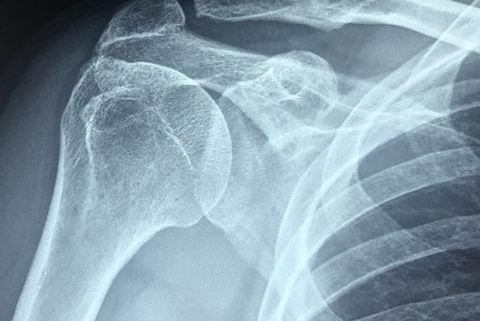
Rotator Cuff Tears
Overview
Rotator cuff tears are commonly occurring shoulder injuries, particularly in older individuals or those who engage in repeated overhead motions in their activities or working tasks. The rotator cuff is a group of muscles and tendons that surround the shoulder joint, keeping the top of your upper arm bone securely within the shallow socket of the shoulder. A tear, caused by wear and tear from aging or from an injury, can result in severe pain and disability, compromising one’s quality of life.
Types
Rotator cuff tears are categorized into two types:
1. Partial Tear: This type damages the soft tissue, but it doesn’t completely sever it.
2. Full-thickness or Complete Tear: This refers to tears that split the soft tissue into two pieces. In many cases, tendons can tear off where they attach to the head of the humerus.
Causes
While rotator cuff tears can happen as a result of a single traumatic incident (such as falling onto an outstretched arm), the majority are due to progressive degeneration with age or repetitive overhead activities. These include:
- Aging: As you get older, the risk of rotator cuff injuries increases.
– Certain sports: Athletes who regularly use repetitive arm motions, such as baseball, tennis, or weightlifting, are at greater risk.
– Construction jobs: Occupations like painting or carpentry, which require repetitive motion, can cause over time a rotator cuff tear.
Symptoms
Include the following:
– A dull ache deep in the shoulder.
– Difficulty reaching your back or lifting your arm.
– Disturbed sleep, particularly when lying on the affected shoulder.
– Weakness in your arm.
Diagnosis
Diagnosis includes a physical examination testing your arm strength and range of motion and imaging scans. High-resolution ultrasonography, magnetic resonance imaging (MRI), and arthrography are the most commonly used methods to detect rotator cuff tears.
Treatment Options
Treatment strategies vary based on the severity of the tear and the individual’s condition:
– Conservative Treatment: This includes resting the shoulder, applying heat or cold to the sore area, and medications to reduce pain and swelling.
– Physical Therapy: Specific exercises can restore flexibility and strength to your shoulder.
– Surgery: It’s often recommended with larger tears, or if symptoms persist despite conservative treatment.
Living With Rotator Cuff Tears
Living with a rotator cuff tear involves managing pain and adjusting daily activities to reduce strain on the shoulder. Regular physical exercise including stretching, and strengthening can help improve shoulder mobility. It may also be necessary to adjust the setup in workspaces and homes to avoid overextending the arm or lifting heavy objects.
When to Seek Help
It’s important to consult a medical professional if you have persistent shoulder pain or weakness that doesn’t improve with home treatment, interrupts your sleep or daily activities. Immediate attention is necessary following acute injuries, or if you experience any sudden onset of symptoms. Remember, while you can’t always prevent a rotator cuff tear, early intervention promotes the best chance for a full recovery.
